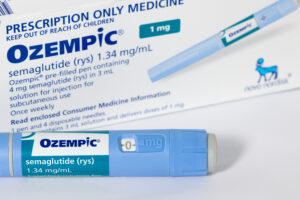Parkinson’s disease is a neurodegenerative disorder that affects predominantly dopamine-producing neurons in a specific area of the brain called substantia nigra.

Here are some key facts about Parkinson’s disease:
- Symptoms: Primary symptoms include tremors (shaking), bradykinesia (slowness and loss of spontaneous movement), rigidity (stiffness), and postural instability (balance problems). Other secondary symptoms can range from anxiety, depression, to cognitive problems.
- Cause: The exact cause of Parkinson’s is unknown, but it’s generally thought to be a combination of genetic and environmental factors. The disease is associated with the loss of dopamine-producing cells in the brain.
- Diagnosis: There is no definitive test for Parkinson’s disease. A neurologist will typically diagnose the condition based on medical history, a review of signs and symptoms, and a neurological and physical examination.
- Treatment: There is currently no cure for Parkinson’s disease, but medications can significantly improve symptoms. Medications often involve increasing the level of dopamine in the brain.
- Prevalence: Parkinson’s disease affects approximately 1% of individuals aged 60 years and older, with the incidence increasing with age.
- Risk factors: Age is the largest risk factor for the development and progression of Parkinson’s disease. Men are 1.5 times more likely to have Parkinson’s disease than women.
- Progression: Parkinson’s disease is chronic and progressive, meaning it persists over a long duration and its symptoms grow worse over time.
- Research: Many research studies are ongoing to find more effective treatment strategies and, ultimately, a cure. This includes research into gene therapy, stem cell transplantation, and the development of new medications.
- Famous cases: Perhaps the most well-known individual with Parkinson’s disease is actor Michael J. Fox, who was diagnosed in 1991. He has since become an advocate for research toward finding a cure.
- Support: There are numerous organizations worldwide that provide resources, advocacy, and support for people living with Parkinson’s disease and their families. Examples include the Parkinson’s Foundation and the Michael J. Fox Foundation for Parkinson’s Research.
Sergey Brin about Parkinson’s disease
Sergey Brin, the co-founder of Google, has a strong personal interest in Parkinson’s disease research due to his own increased risk of developing the condition. His mother developed Parkinson’s disease, and genetic testing revealed that Brin himself carries a mutation in the LRRK2 gene, which is associated with a significantly increased risk of Parkinson’s, particularly in certain ethnic groups.
Brin has taken a proactive approach to this risk. Notably, he has made significant contributions to Parkinson’s disease research. In 2008, Brin made a donation to the University of California’s Parkinson’s Institute. He also regularly donates to the Michael J. Fox Foundation for Parkinson’s Research.

He has stated that he hopes his contributions will accelerate the pace of clinical research and trials to improve therapies for Parkinson’s disease, and ultimately find a cure. His donations are often made through the Sergey Brin Family Foundation.
Moreover, in 2009, Google invested in the genetics testing company 23andMe, which was co-founded by Brin’s then-wife Anne Wojcicki. One of the services offered by 23andMe is a test for the LRRK2 and other genetic mutations associated with Parkinson’s disease.
Through these actions, Brin has used both his personal wealth and influence to drive forward the science and understanding of Parkinson’s disease.
Understanding a Neurodegenerative Disorder
Parkinson’s disease is a progressive neurodegenerative disorder, meaning it involves the gradual loss of nerve cells in the brain. It primarily affects movement and is characterized by a wide range of symptoms. The central issue in Parkinson’s is the deterioration and death of neurons in a region of the brain called the substantia nigra. These neurons are responsible for producing dopamine, a crucial chemical messenger that facilitates smooth, coordinated muscle movement. As these cells are lost, dopamine levels drop, leading to the hallmark motor symptoms of the condition.
Recognizing the Primary Motor Symptoms
The diagnosis of Parkinson’s is largely based on the presence of four key motor symptoms. The first is tremor, often a rhythmic shaking that typically begins in a hand or finger, known as a “pill-rolling” tremor. Bradykinesia, or slowness of movement, is another core feature, making simple tasks difficult and time-consuming. Muscle stiffness or rigidity can occur in any part of the body, often causing pain and limiting range of motion. Postural instability, which manifests as impaired balance and coordination, increases the risk of falls, particularly in the later stages of the disease.
Non-Motor Symptoms and Management
While known for its physical effects, Parkinson’s also causes a host of non-motor symptoms that can be equally challenging. These include sleep disorders, loss of smell, constipation, depression, anxiety, and cognitive changes. There is currently no cure for Parkinson’s disease, but treatment focuses on managing symptoms and improving quality of life. The mainstay of treatment is medication, most commonly Levodopa, which the brain converts into dopamine to help restore motor function. Physical, occupational, and speech therapy are also critical components of a comprehensive management plan.











